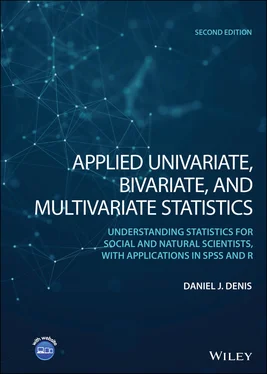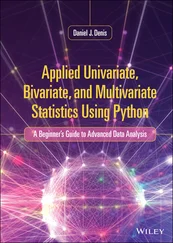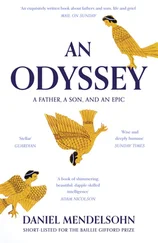The word “applied” in applied statisticsshould not be understood to necessarily imply the use of computers. What “applied” should mean is that the focus on the writing is on how to usestatistics in the context of scientific investigation, oftentimes with demonstrations with real or hypothetical data. Whether that data is analyzed “by hand” or through the use of software does not make one approach more applied than the other. If analyzed via computer, what it does make it is more computationalcompared to the by‐hand approach. Indeed, there is a whole field of study known as computational statisticsthat features a variety of software approaches to data analysis. For examples, see Dalgaard (2008), Venables and Ripley (2002), and Friendly (1991, 2000) for an emphasis on data visualization. Fox (2002) also provides good coverage of functions in S‐Plus and R. And of course, computer scienceand the machine‐learningmovement have contributed greatly to software development and our ability to analyze data quickly and efficiently via algorithms, and implement new and classic procedures that would be impossible otherwise.
On the opposite end of the spectrum, if a course in statistics is advertised as notbeing applied, then most often what this implies is that the course is more theoretical or mathematical in nature with a focus on proof and the justification of results. In essence, what this really means is that the course is usually more abstractthan what would be expected in an applied course. In such theoretical courses, very seldom will one see applications to real data, and instead the course will feature proofsof essential statistical theoremsand the justification of analytical propositions. Hence, this is the true distinction between applied versus theoreticalcourses. The computer has really nothing to do with the distinction other than facilitatingcomputation in either field.
1 1.1. Distinguish between rationalism versus empiricism in accounting for different types of knowledge, and why being a rationalist or empiricist exclusively is usually quite unreasonable and unrealistic.
2 1.2. Briefly discuss what is meant by a model in scientific research.
3 1.3. Compare and contrast the social versus so‐called “hard” sciences. How are they similar? Different? In this context, discuss the statement “Social science is a courageous attempt.”
4 1.4. Compare and contrast a physical quantity such as weight to a psychological one such as intelligence. How is one more “real” than the other? Can they be considered to be equally real? Why or why not?
5 1.5. Why would some people say that an attribute such as intelligence is not measurable?
6 1.6. Discuss George Box's infamous statement “All models are wrong, some are useful.” What are the implications of this for your own research?
7 1.7. Consider an example from your own area of research in which two competing explanations, one simple, and one complex, may equally well account for observed data. Then, discuss why the simpler explanation may be preferable to the more complex. Are there instances where the more complex explanation may be preferable to the simpler? Discuss.
8 1.8. Briefly discuss why using statistical methods to make causal statements about phenomena may be unrealistic and in most cases unattainable. Should the word “cause” be used at all in reference to nonexperimental social research?
9 1.9. Discuss why it is important to suspend one's beliefs about a subject such as applied statistics or mathematics in order to potentially learn more about it.
10 1.10. Statistical thinking is about relativity. Discuss what this statement means with reference to the pilot example, then by making up an example of your own.
11 1.11. Distinguish between experimental versus statistical control, and why understanding the distinction between them is important when interpreting a statistical model.
12 1.12. Distinguish between statistical versus physical effects and how the effect of a medication treating a wound might be considered different in nature from the correlation between intelligence and self‐esteem.
13 1.13. Distinguish between the domains of applied versus theoretical statistics.
Further Discussion and Activities
1 1.14. William of Ockham (c. 1287–1347) is known for his infamous principle Ockham's razor, which essentially states that all things equal, given competing theories accounting for the same data, the simpler theory is the better theory. In other words, complex explanations for phenomena that could be explained by simpler means are not encouraged. Read Kelly (2007), and evaluate the utility of Ockham's razor as it applies to statistical modeling. Do you agree that the simpler statistical model is usually preferred over the more complex when it comes to modeling social phenomena? Why or why not?
2 1.15. Read Kuhn (2012). Discuss what Kuhn means by normal science and the essence of what constitute paradigm shifts in science.
3 1.16. As briefly discussed in this chapter, statistical control is not the same thing as experimental control or that of a control group. Read Dehue (2005), and provide a brief commentary regarding what constitutes a real control group versus the concept of statistical controls.
4 1.17. It was briefly discussed in the chapter potential problems with using the word cause or speaking of causality at all when describing findings in the social and (often) natural sciences. The topic of causality is a philosopher's career and a scientist's methodological nightmare. Epidemiology, the study of diseases in human and other populations, has, like so many other disciplines, had to grapple with the issue of causation. For example, if one is to make the statement smoking causes cancer, one must be able to defend one's philosophical position in advancing such a claim. Not everyone who smokes gets cancer. Further, some who smoke the most never get the disease, whereas some who smoke the least do. Tobacco companies have historically relied on the fact that not everyone who smokes gets cancer as a means for challenging the smoking‐cancer “link.” As an introduction to these issues, as well as a brief history of causal interpretations, read Morabia (2005). Summarize the historical interpretations of causality, as well as how epidemiology has generally dealt with the problem of causation.
5 1.18. Models are used across the sciences to help account for empirical observations. How to best relate mathematical models to reality is not at all straightforward. Read Hennig (2009), and discuss Hennig's account of the relation between reality and mathematical models. Do you agree with this account? What might be some problems with it?
1 1 B.F. Skinner was a psychologist known for his theory of operant conditioning within the behaviorist tradition in psychology. One of Skinner’s primary investigatory tools was that of observing and recording the conditions that would lead a rat, pigeon, or other animal, to press a lever for a food pellet in a small chamber. This chamber came to be known as the Skinner box. For a read of Skinner, see Rutherford (2009) and Fancher and Rutherford (2011).
2 2 See Friendly (2000, pp. 208–211) for an analysis of the O‐ring data. See Vaughan (1996) for an account of the social, political, and managerial influences at NASA that were also purportedly responsible for the disaster.
3 3 The reader is strongly encouraged to consult Kuhn’s excellent book The Structure of Scientific Revolutions in which an eminent philosopher of science argues for what makes some theories more longstanding than others and why some theories drop out of fashion. So‐called paradigm shifts are present in virtually all sciences. An awareness of such shifts can help one better put “theories of the day” into their proper context.
Читать дальше












